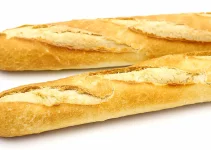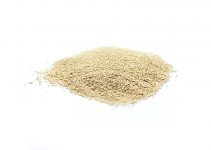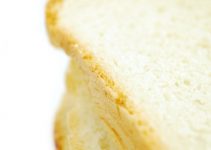Let’s establish this right from the start: in order to talk about compostable parchment paper and in order to answer the question is parchment paper biodegradable, we must first address the two types.
Contents
2 Types of Parchment Paper
Parchment paper falls into two categories:
- bleached – the white one that most of us pick without actually thinking about the implications of the word bleached
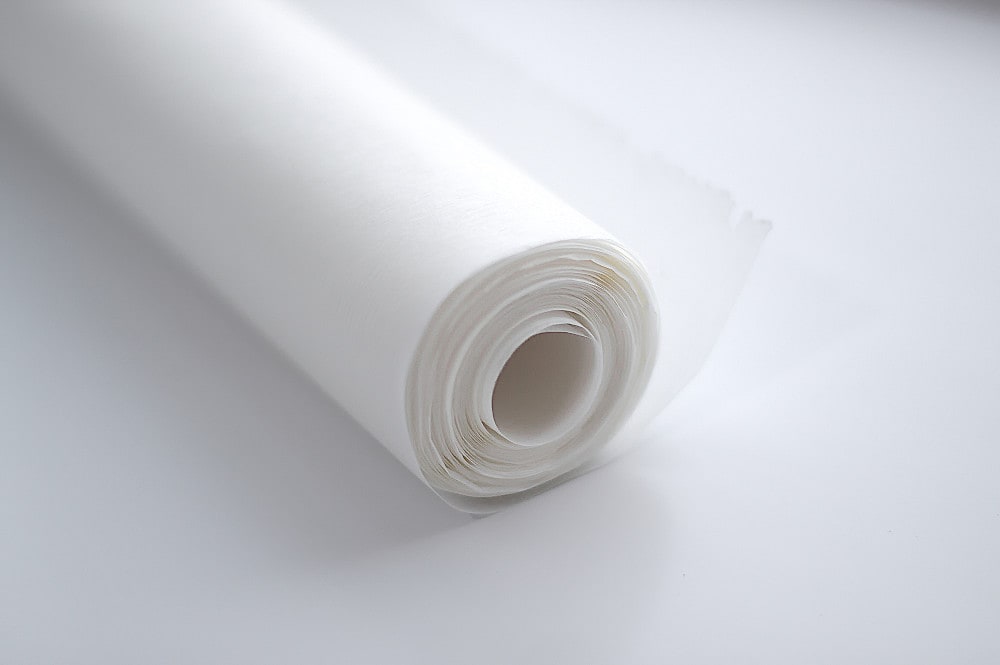
bleached parchment paper
- unbleached – the brown one that you might not consider that pretty but it turns out that it’s the best choice that we could make
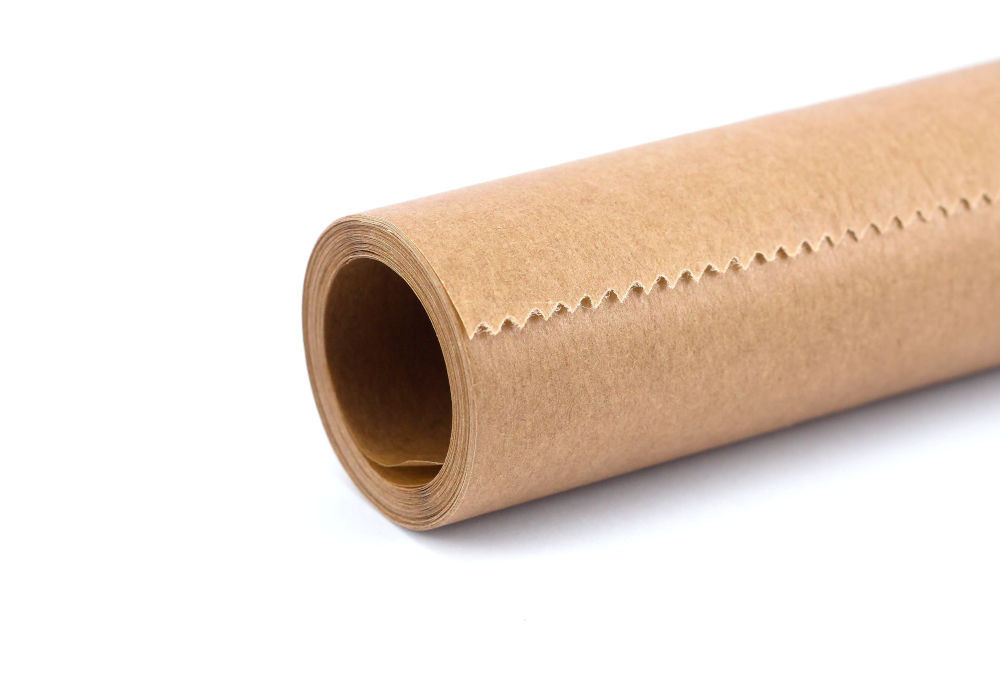
Unbleached parchment paper
The color is the only different thing about them, their function is the same and the foods won’t stick at all to either.
Frankly, I never payed attention to the fact that I always buy the bleached parchment paper. I have done that for the last 20 years or so without giving it a second thought.
Of course, we can further categorize it by the fact that we can buy it rolls or in the form of baking sheets. The later are indeed very easy to use but the rolls are an amazing option, as well. I really don’t have any preferences when it comes to the forms of parchment paper.
Now that we have the two types, let’s get back to the topic at hand, talking about which is the compostable parchment paper for sure.
Is Parchment Paper Biodegradable?
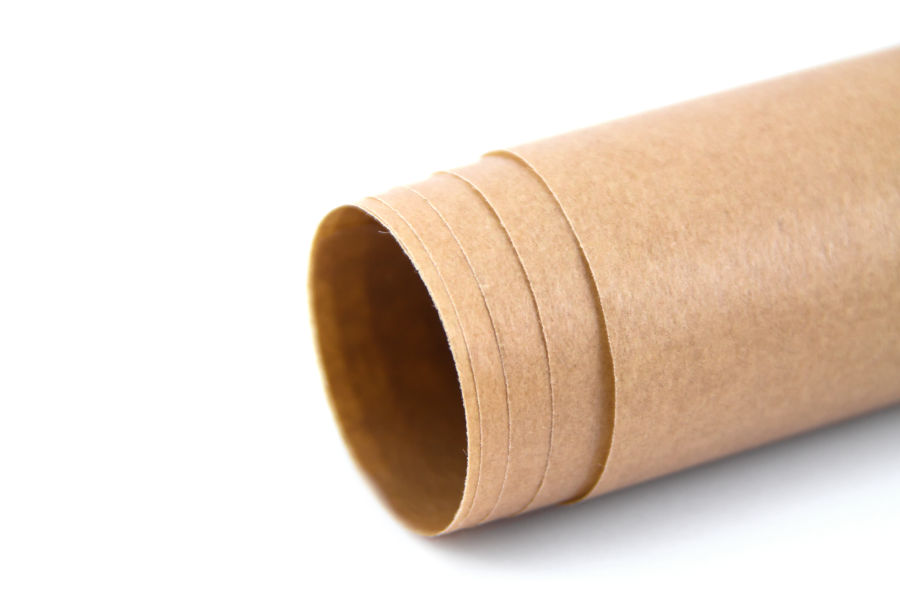
In theory, we could simply say that all parchment paper is biodegradable.
In reality, the compostable and biodegradable attributes apply only to the unbleached type, the brown one, in most cases. Unless the bleached type doesn’t specify that it’s compostable, then you can assume that it’s not.
You don’t have to check any labelling for the unbleached type.
It will completely break down in 30 to 90 days, getting absorbed by the soil.
However, if you find yourself preferring the bleached type, there are some things to be discussed. You can check on the packaging to see if the manufacturer states that it’s compostable. These are actually quite rare.
One manufacturer that makes that mention is Reynolds, which manufacturers the white type but it absolutely states that it’s the compostable kind.
All in all,
If we want to cut the story short, we can pretty much assume and state that all parchment paper is biodegradable and compostable. Nevertheless, there is a bit of controversy concerning this subject and I want to present it to you.
Bleached vs Unbleached Compostable Parchment Paper
If we were to take the advice of Green Calgary, parchment paper goes into the green bin. They don’t make any distinction between the two types.
On the other hand, this website claims that “compostable unbleached parchment paper” are the correct terms to address this matter. And that we shouldn’t compost the bleached type, the white one.
The author argues that the bleaching requires the addition of chemicals and a rigorous manufacturing process. It also makes the distinction that it’s not biodegradable.
Chloride dioxide (CLO2) is used to remove the brown color and turn it white. We could also draw the conclusion that the bleached one isn’t good for the environment.
Thus, that’s the small controversy on this subject.
My conclusion
I would still say that the answer to the question is parchment paper biodegradable is yes.
Furthermore, thanks to the research I did on this article, I am definitely going to buy only the unbleached one starting from now.
There’s absolutely no reason not to buy the unbleached type since it’s not more expensive, we can buy it from pretty much anywhere, and we can also get it either as rolls and as baking sheets.
Only in that instance we can be 100% sure that we’re buying the compostable and biodegradable option.
Or if the manufacturer of the white type includes the word compostable. Then, we can go ahead and choose that one.
That’s what we should all do since there’s no extra cost involved and the quality is absolutely the same.
The bleached type definitely comes with a question mark that it’s pretty hard to answer.
Check out my post on parchment paper substitutes if you want to see which are the best replacements.
Tip for composting
If you make your own compost, you can cut the parchment paper in smaller pieces and soak them in warm water before adding them to your pile. That way, the rate of decomposition is faster.
It will be a good source of carbon, it’s a brown ingredient.
However, don’t add the one that has residues of fish, meat, grease or dairy products.
Moreover, wax paper is not suitable for composting.
Is Parchment Paper Made from Animal Skin?
The history goes back to 2500 B.C. when parchment paper was made from calfskin and used for written documents and books. No use for cooking in the beginning.
Moving on to present time, the parchment paper we use today for cooking is made of heavy-duty, heat-resistant, nonstick paper.
Silicone is added for the nonstick function and in order to make it safe for oven use, it won’t burn.
Obviously, it’s not edible. When was the last time you started chewing on a piece of paper?
Best Compostable Parchment Paper
Let’s see which are the best options to focus on if we want to protect our environment, even in this small way. As I said, the focus is on unbleached.
If it’s brown paper, it’s great. But there are also some white parchment paper options that are compostable.
1. If You Care Parchment Baking Paper, 70 Square Feet
I don’t like that the roll only measure 70 square feet. Also, the price is a bit expensive, there are definitely more cheaper choices.
But, all in all, it’s still my top recommendation as the best compostable parchment paper.
And who wouldn’t want to buy from a company called If You Care that also has a tree on the packaging and the words “quality with integrity” written under the tree.
It is silicone coated, otherwise it wouldn’t be nonstick.
It’s made of heavy duty, greaseproof, nonstick paper, which is chlorine free and compostable.
They also have it in the form of baking sheets that measure 12.5 x 16 inches.
2. Baklicious Unbleached Baking Sheets, 220 Pieces
Now, for those who want to buy baking sheets, meaning pieces of parchment paper that come pre-cut, we have these from Baklicious.
The baking sheets measure 12 x 16 inches and there 220 of them in the package.
Judging by the fact that we get 220 pieces, the price is really good, not expensive at all.
They’re obviously waterproof and greaseproof.
However, the manufacturer mentions nothing about being able to reuse the same baking sheet for multiple bakings.
The sheets are made from natural wood pulp.
Baklicious states that their baking sheets are thicker. Theirs have a 45gms thickness, which means that they’re stronger, more durable, and less brittle.
The temperature resistance is from -68 to 450 degrees Fahrenheit.
3. Reynolds Kitchens Roll, 90 Square Feet
This is one of those examples of white parchment paper that is compostable. And it’s one of the best choices, really popular.
It comes in the form of a roll that measures 90 square feet.
However, for this size, the price is a bit high.
I prefer the rolls that measure at least 200 square feet because I go through a lot, I cook daily.
But if you insist on baking on white paper that can be added to your compost pile, this is a good choice.
What I really find adorable is the fact that it includes smartgrid lines for even spacing in the form of 1- and 2-inch guidelines.
It’s oven safe up to 425 degrees F and it’s obviously nonstick.
You can reuse the same sheet up to 3 times, which will definitely make it last a lot longer.
For easy straight cutting, use a pair of really sharp scissors.
The Parchment Paper Cookbook
While I did some research for this article, I actually discovered The Parchment Paper Cookbook by Brette Sember. It really made me curious, I wanted to know what this book could be about.
It’s about parchment paper cooking, the author claiming that it’s the easiest kind of cooking.
No pots, no pans, no dirty baking dishes.
Thus, all the ingredients go into parchment paper packets – these are cooked quickly in the oven or even toaster oven.
The introduction includes how to fold parchment paper to obtain the food pockets in which you’ll cook the ingredients in. If you can master that, the rest is easier.
The chapters focus on: breakfast, chicken and turkey, pork and lamb, beef and veal, seafood, vegetable dishes, bread rice and potato dishes, desserts.
It’s definitely a cooking method to consider for small spaces or for those leading a busy life who still want to enjoy some healthy flavorful food cooked at home.
The author states that this type of cooking limits the amount of fat we need to add to each dish. Although, I would add that if the fat comes in the form of olive oil, I definitely don’t mind adding quite a lot.
It also states that it’s environmentally friendly. We cut down on the amount of water we use for doing the dishes and on the amount of energy needed for cooking since we only use the oven.
Moreover, we can recycle or compost the parchment paper instead of sending it to the landfill. I would add that when talking about compostable parchment paper, we must use the unbleached type, that’s the biodegradable one.

